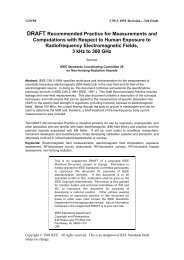An introduction to the quark model
An introduction to the quark model
An introduction to the quark model
You also want an ePaper? Increase the reach of your titles
YUMPU automatically turns print PDFs into web optimized ePapers that Google loves.
Few-charge systems His<strong>to</strong>ry of <strong>the</strong> <strong>quark</strong> <strong>model</strong> Mesons Baryons Multi<strong>quark</strong>s and o<strong>the</strong>r exotics Outlook<br />
Spin forces in a<strong>to</strong>ms<br />
Deduced from <strong>the</strong> vec<strong>to</strong>r character of <strong>the</strong> exchanged pho<strong>to</strong>n,<br />
Au<strong>to</strong>matically included in fully relativistic treatments,<br />
Pauli, Fermi, Breit, etc., derived corrections <strong>to</strong> be added <strong>to</strong> NR<br />
Hamil<strong>to</strong>nians, and treated as perturbation,<br />
In particular, <strong>the</strong> famous hyperfine correction<br />
Vss = e2<br />
m1 m2<br />
2 π<br />
3 δ(3) (r) σ1.σ2 ,<br />
splits ortho- and para-hydrogen (important transition in<br />
astrophysics; analogue <strong>to</strong> be measured in antihydrogen),<br />
Note <strong>the</strong> short-range character,<br />
Note <strong>the</strong> very specific mass dependence<br />
For (e + , e − ), ∃ o<strong>the</strong>r contribution<br />
JMR Quark Model

















